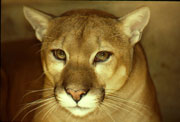Could seeing dogs on the way to work each morning influence what type of sneakers you buy?
In a new research paper, Wharton marketing professor Jonah Berger makes the case that what you see in your everyday world can influence your choices as a consumer. In the paper, “Dogs on the Street, Pumas on Your Feet: How Cues in the Environment Influence Product Evaluation and Choice,” the first part of the title refers to the results of an experiment in which participants who were shown repeated images of dogs were quicker to recognize the Puma brand, and liked its sneakers more, than those who had not seen the images. Confused? It turns out that dogs are associated with cats, and cats are associated with Puma.
“Seeing dogs is not going to cause people to leap out of their chairs and go buy 10 pairs of Puma sneakers,” says Berger. But the experiment does suggest that environmental cues, even ones you may not be consciously aware of, can influence what you like and buy.
“Marketers always think if they want a product to catch on, they have to think up a catchy slogan or come up with a slick advertisement to create a buzz,” Berger says. Instead, his research suggests that companies can get a payoff by creating a link between their product and something in the environment. “We think of advertising as a way to remind people of products; putting up more ads should increase sales. But we should also think about linking products to the environment and let the environment do the work for us.”
Berger offered the example of Tide detergent. The conventional thinking is that the more Tide ads consumers see, the more likely they are to want to buy it. Perhaps, he said, seeing waves on the beach (think ocean tides) may work just as well to stimulate consumer interest in Tide detergent.
Berger and co-author Grainne Fitzsimons, a psychology professor at the University of Waterloo in Ontario, Canada, report their findings on environmental cues in the February issue of the Journal of Marketing Research. “Researchers have argued that ‘consumer behavior is strongly influenced by subtle environmental cues,'” they write, “but few studies have empirically investigated this argument.”
They begin their report by offering the example of Mars Bars, which saw an increase in sales after NASA landed the Pathfinder spacecraft on Mars on July 4, 1997. “Although the Mars Bar takes its name from the company founder and not from Earth’s neighboring planet, consumers apparently responded to news about the planet Mars by purchasing more Mars Bars,” the authors write. “This was a lucky turn of events for the candy company, but what does it mean for understanding consumer choice?”
Orange Crush and Sunkist
To test their own hypothesis that exposure to environmental cues can prime the memory to favor certain products, they devised a series of experiments. In the first one, they looked at what effect the abundance of the color orange around Halloween had on consumer thinking about certain products. They asked 144 shoppers to quickly list what came to mind in the categories of candy/chocolate and soda. Half were asked the day before Halloween, and the other half were asked a week later. The shoppers on the day before Halloween were almost twice as likely to list orange-colored products — Reese’s candy and Orange Crush and Sunkist sodas — than those shoppers questioned a week after the holiday.
“Our results demonstrate that the prevalence of environmental cues as simple as color can affect product accessibility, even in noisy, real-world consumer environments,” the researchers write. Around St. Patrick’s Day, Berger said, “you would imagine Sprite would sell better.”
In another experiment, 29 people were approached on a university campus and asked to complete a “Consumer Choice Survey.” Half were given an orange pen with orange ink to write with; the other half were given a green pen that wrote in green. Participants were first asked to write a few sentences to expose them to the pen’s color. They were then shown product images and asked which of two products they would choose in various categories, such as candy, detergent and beverages. Among the choices: Sunkist soda and Lemon-Lime Gatorade.
“Exposure to a colored pen led participants to choose more products of that same color,” the researchers write. Those using an orange pen favored orange products; the green-pen group liked green productsby a factor of 20%. Once again, exposure to an environmental cue primed participants to think, and choose, a certain way.
Nutritionists and public health workers might be particularly interested in the results of another one of the researchers’ experiments, this time involving fruits and vegetables (and of all things, dining hall trays). Berger and his research partner wanted to know if college students would eat more fruit and vegetables if a slogan reminding them to do so were linked to something in their everyday life, in this case, cafeteria trays. The experiment had a couple of variables. Some students ate in dining halls that used trays; others ate in dining halls that didn’t use trays. Some of the participants learned a slogan — without an environmental cue such as one referring to trays — saying, “Live the healthy way, eat five fruits and veggies a day.” The others heard a different slogan, one with the environmental cue: “Each and every dining hall tray needs five fruits and veggies a day.”
The participants were asked to keep track of what they ate over a two-week period; halfway through, they learned one of the two slogans. “We theorized that this differential cueing by the environment would cause participants who were exposed to trays in their daily environment to consume more fruits and vegetables,” the researchers stated. And they were right. While students in the non-control groups (non-tray slogan, no cafeteria trays) did not change their consumption, “those who were cued by the environment ate 25% more fruits and vegetables,” according to Berger.
Conceptual Priming Effects
Berger says the findings suggest that public health experts should consider harnessing the power of environmental cues to spread their messages, whether on nutrition, smoking or binge drinking. “There is a lot of effort put into telling people to eat ‘five a day,'” he says, and “everyone agrees they should eat more fruits and vegetables.” But just because you hear a catchy slogan about eating more nutritious foods doesn’t mean you will think to do so when it’s time for lunch or dinner,” he adds. “People need to remember the information at the time when the relevant behavior is taking place.” Hence the strategy of devising a slogan with the word “tray” — an object found in the environment of college students.
“Although catchiness may indeed be important … marketers should also pay greater attention to whether their slogans (and products) will be cued by the environment,” the researchers write. According to Berger, the findings can be applied to the marketing of all sorts of products, although he says he’s not necessarily interested in “finding ways to sell more Coke…. If we can get college students to eat more fruits and vegetables, that’s a good thing.”
In the Puma brand study, the researchers built on previous research showing that “cats and dogs have a strong cognitive association in memory because of their many feature similarities as domestic pets.” Study participants were shown a series of 20 pictures. Some were shown only images unrelated to Puma (such as a picture of a stapler), while others saw either five or 10 images of dogs. When the participants were then shown pictures of different brands of sneakers, those who had seen a lot of dog pictures were 30% faster to recognize the Puma brand.
“Our findings show that cue exposure can affect attitudes not only toward the exposed object but also toward any object that shares a conceptual relationship,” the authors write. “In addition to relying on existing conceptual relationships, the data indicate that marketers can create novel links between their product and a commonly encountered feature in the consumer environment.”
The Puma study also shows how frequency of exposure to a given environmental cue, not just recent exposure, can influence product evaluation and choice. The more dog pictures participants saw, the more apt they were to recognize the Puma brand and to evaluate Pumas favorably compared to other brands. Participants were shown pictures of Pumas and other brands of sneakers, such as Reebok, and were asked to evaluate them. “People who saw more dogs liked Puma sneakers more,” Berger said.
“Conceptual priming effects can have a strong impact on real-world consumer judgments,” the authors write. And it wasn’t because the participants consciously made the connection between dogs and cats and Puma. “Priming effects can emerge without deliberate learning and can occur outside of conscious awareness.”
Berger suggests that advertisers and marketers need to think creatively of ways to link their product to something in people’s everyday lives. Marketers of a product that appeals to business travelers, for instance, might want to take advantage of the image of luggage as a cue because luggage is a common element of a business traveler’s environment. If the company linked their product to luggage, business travelers might be more likely to think of the product every time they were at the airport.
Using the same environmental cue for all audiences may not be the best approach, the researchers say. Rather, the cues chosen for slogans, brand names and advertising messages can be customized based on geographic regions (palm trees for West Coast customers), or demographics (lockers for students). A nutrition slogan using the word “tray” would probably do no good for families who eat around their kitchen table. Also, the same cue may mean different things to different groups.
“Marketers should consider the nature of consumer environments when designing product names, packages and advertising campaigns,” the researchers conclude. “A car dealership in Minnesota might consider linking itself to cold weather or mittens, whereas a restaurant in Arizona might want to consider links to the dry climate. Depending on what planet NASA decides to go to next, the Mars candy company might even want to think about introducing a new candy bar.”
Culture and Marketplace Effects on Perceived Price Fairness: China and the USA



